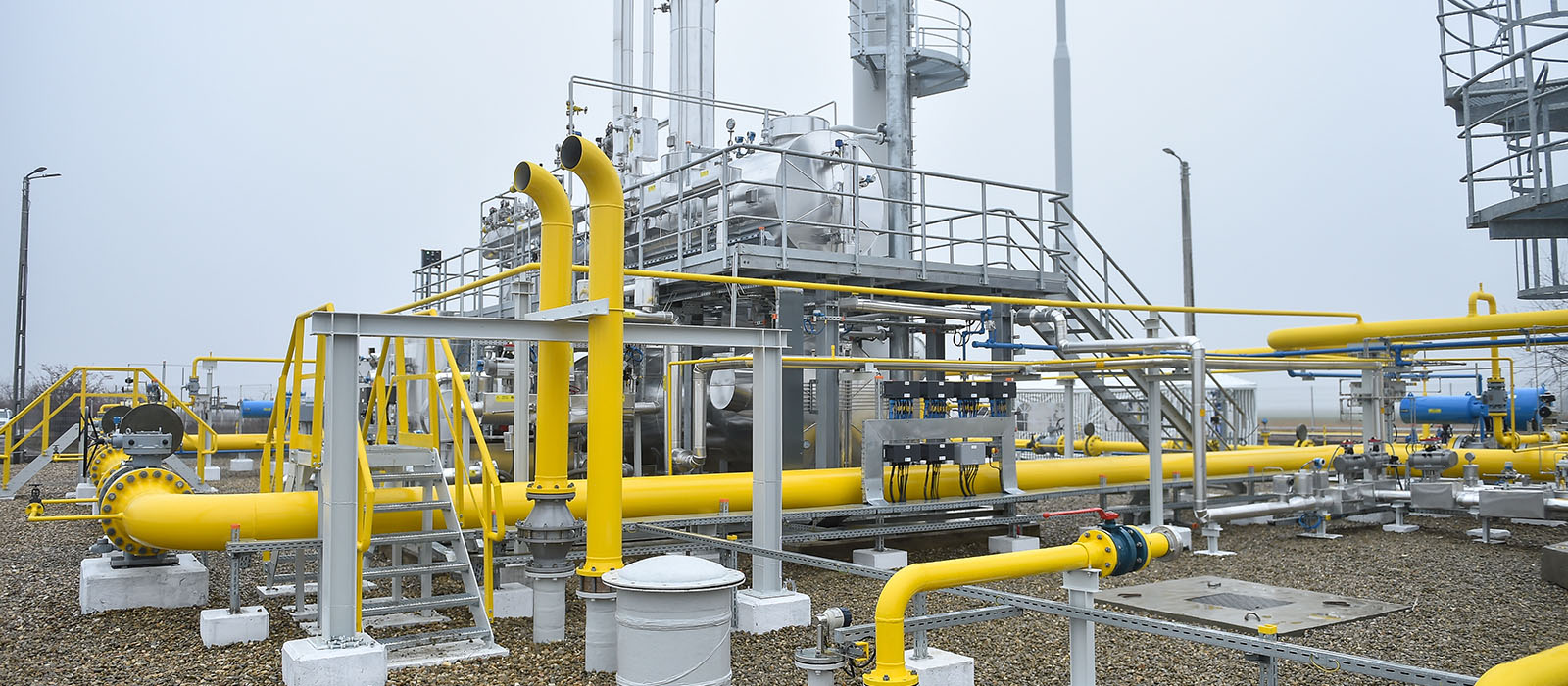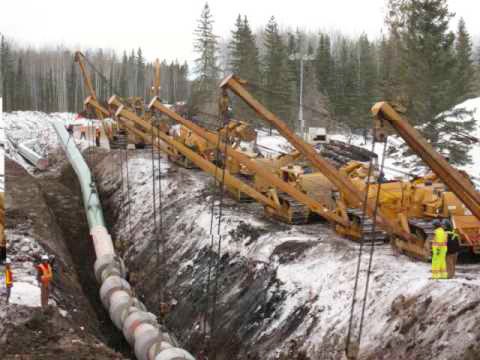Discovering the most up to date Innovations in Pipeline Construction Services for Modern Projects
The Pipeline Construction sector is undertaking substantial changes. Developments such as wise products and robotics are reshaping conventional practices. These improvements guarantee to improve efficiency and security. Additionally, AI technologies are boosting task monitoring abilities. As these elements merge, they question concerning their long-lasting effect on sustainability and price. Comprehending these innovations is essential for stakeholders looking to browse this developing landscape. What effects do they hold for future projects?
The Rise of Smart Materials in Pipeline Construction
As the need for extra lasting and effective Pipeline systems increases, the combination of wise materials has become a transformative service in Pipeline Construction. These innovative materials possess one-of-a-kind residential or commercial properties that boost the efficiency and durability of pipes. For example, self-healing polymers can instantly repair minor leaks, greatly reducing maintenance expenses and downtime. Additionally, products installed with sensing units can monitor architectural honesty and environmental conditions, permitting real-time data collection and evaluation.
In addition, clever materials are corrosion-resistant and typically lightweight, which not just streamlines setup however additionally expands the lifespan of the systems. Their adaptability enables pipelines to endure extreme environmental problems, promoting safety and dependability. As markets increasingly focus on sustainability, the usage of environmentally friendly wise products contributes to reduced environmental impact. Overall, the surge of wise products marks a notable change in Pipeline Construction, leading the way for ingenious services to satisfy modern facilities requirements.
Innovations in Robotics for Installation and Upkeep
The combination of smart materials in Pipeline Construction is complemented by innovations in robotics, which are reinventing installment and upkeep processes. Robot innovations, such as automated welding systems and drones, boost effectiveness and precision, lowering human mistake and decreasing security threats. These robotics can run in difficult settings, making sure that installments are performed in remote or dangerous areas without placing employees at danger.
Additionally, robotic evaluation devices outfitted with sophisticated sensing units provide real-time information on Pipeline integrity, enabling aggressive maintenance. They can identify leaks or structural weaknesses, allowing prompt interventions that extend the lifespan of Pipeline systems. Using robotics not just accelerates the Construction timeline but additionally optimizes resource appropriation, leading to cost financial savings. As these technologies remain to progress, they are set to play an important role fit the future of Pipeline Construction, making certain reliability and sustainability in facilities growth.
AI-Driven Project Management Equipment Transforming Workflow
AI-driven project monitoring tools are reshaping operations in Pipeline Construction by enhancing decision-making processes with better accessibility to real-time data analytics. These devices make it possible for groups to react promptly to project growths, consequently boosting performance. Furthermore, structured communication networks foster partnership amongst stakeholders, even more optimizing task end results.
Enhanced Decision-Making Procedures

Real-Time Information Analytics
Harnessing real-time data analytics, modern task administration tools change operations in Pipeline Construction. These sophisticated devices take advantage of expert system to provide instantaneous insights right into project efficiency, resource allowance, and potential dangers. By continuously keeping track of crucial efficiency signs, teams can swiftly adapt to altering conditions, optimizing labor and materials use. The assimilation of real-time data enables even more educated decision-making, decreasing hold-ups and reducing prices. Furthermore, predictive analytics can identify trends and projection difficulties prior to they intensify, enhancing total project effectiveness. Therefore, Pipeline Construction firms that take on these AI-driven tools can improve job timelines and outcomes, ensuring they continue to be competitive in a progressively complex industry landscape. This development notes a substantial change towards data-centric monitoring practices.
Streamlined Interaction Networks
Reliable interaction is paramount in Pipeline Construction, where countless stakeholders have to team up flawlessly to assure job success. The introduction of AI-driven task monitoring devices has transformed interaction channels within the industry. These devices promote real-time details sharing, allowing teams to gain access to updates, share papers, and track development effectively. By automating routine tasks and providing a central platform for interaction, these innovations eliminate misunderstandings and reduce delays. Improved presence into task timelines and resource allocation cultivates responsibility among employee. In addition, AI analytics can recognize possible interaction gaps, making certain positive analytic. Eventually, structured communication channels not only boost operations but additionally raise overall task efficiency, allowing Pipeline Construction companies to satisfy contemporary needs effectively.
Improved Safety Procedures Via Modern Technology Integration
The assimilation of innovation in Pipeline Construction has resulted in enhanced safety and security methods. Real-time monitoring systems, wearable safety devices, and automated risk evaluations are now necessary components in reducing hazards on task sites. These advancements not just improve worker security yet likewise enhance conformity with market regulations.
Real-Time Tracking Solutions
Just how can real-time tracking systems change Pipeline Construction safety methods? By integrating innovative modern technology, these systems give continuous monitoring of Construction tasks, guaranteeing prompt detection of potential threats. Sensing units and electronic cameras can check ecological conditions, equipment efficiency, and workforce motions, supplying important data in actual time. This positive strategy enables project supervisors to determine risks before they intensify, greatly enhancing security steps on-site. Furthermore, real-time monitoring facilitates conformity with regulative needs, making certain that safety standards are fulfilled constantly. The capacity to evaluate information instantaneously supports enlightened decision-making, making it possible for timely treatments. Consequently, Pipeline Construction projects can operate much more effectively while guarding the wellness of workers and decreasing mishaps, consequently transforming the market's security landscape.
Wearable Safety Gadgets
Regularly, wearable security tools are being incorporated right into Pipeline Construction to improve safety protocols. These cutting-edge tools, consisting of clever headgears, vests, and wristbands, are created to check employee health and ecological problems in real-time. Furnished with sensors, these gadgets can spot hazards such as harmful gas direct exposure, excessive heat, or high noise levels, providing instant informs to managers and employees. In addition, wearable technology commonly consists of GPS tracking functions, allowing for efficient location monitoring of workers on-site. This ability not only help in fast action during emergencies but likewise boosts general project management. By focusing on worker security via technology assimilation, Pipeline Construction business are making significant strides in minimizing mishaps and promoting a society of safety and security within the industry.

Automated Risk Analyses
While conventional risk analyses often depend on hand-operated analyses, the combination of automated danger assessment technologies is changing security procedures in Pipeline Construction. These advanced systems utilize information analytics, expert system, and artificial intelligence to identify prospective risks more properly and effectively. By constantly keeping an eye on environmental problems, tools condition, and employee actions, automated assessments give real-time insights that enhance decision-making. This proactive technique reduces the possibility of crashes and improves conformity with security policies. In addition, automated danger assessments can be updated quickly, ensuring that all stakeholders have accessibility to the most up to date details. Therefore, Pipeline Construction projects gain from a safer workplace, minimizing interruptions and cultivating a culture of security through innovation integration.
Lasting Practices in Pipeline Construction
As the need for energy framework climbs, the Pipeline Construction market increasingly prioritizes sustainable methods that minimize environmental effect. Business are embracing environmentally friendly products and advanced Construction methods to decrease their carbon impact. The use of trenchless innovation allows for Pipeline installment with marginal disturbance to the surrounding atmosphere, reducing and maintaining natural habitats dirt erosion.
In addition, the implementation of renewable resource sources, such as solar or wind, to power Construction activities is getting grip. This change not only lowers reliance on fossil gas but also enhances the total sustainability look at more info of Pipeline jobs. Furthermore, efficient waste administration practices, consisting of recycling and recycling products, are becoming requirement in the sector.
Real-Time Monitoring and Anticipating Maintenance Solutions
The change in the direction of lasting techniques in Pipeline Construction has led the means for the combination of real-time surveillance and predictive maintenance solutions. These technologies utilize advanced information and sensors analytics to continually analyze Pipeline integrity and operational effectiveness. By accumulating data in actual time, operators can spot anomalies such as leaks or pressure declines prior to they intensify right into major concerns. This proactive strategy not only reduces environmental risks yet additionally decreases downtime and maintenance expenses.
Predictive upkeep uses formulas to forecast possible failures based on historic data and existing performance metrics. This makes it possible for prompt treatments, optimizing upkeep schedules and source allocation. In general, real-time monitoring and anticipating upkeep options stand for a considerable advancement in Pipeline Construction, enhancing safety and integrity while supporting sustainability goals. As sectors proceed to embrace these innovations, the operational landscape of Pipeline monitoring is readied to advance considerably, ensuring long-lasting stability and effectiveness.
The Role of Drones in Checking and Inspection
Drones have actually become transformative tools in the evaluating and assessment of pipes, offering improved performance and precision. Their ability to capture high-resolution pictures and video clips from different angles permits comprehensive analyses of Pipeline stability without running the risk of human safety and security. Equipped with advanced sensors and thermal imaging abilities, drones can discover leaks, deterioration, and architectural anomalies that might not show up to the nude eye.
Additionally, the implementation of drones substantially lowers assessment time, enabling quicker decision-making for repair and maintenance. This performance converts to cost savings and very little interruption to bordering settings. Drones can additionally access hard-to-reach locations, such as elevated frameworks or tough surfaces, additionally increasing the extent of examinations.
As the Pipeline industry continues to welcome technological innovations, the integration of drones into evaluating and inspection processes is anticipated to grow, establishing brand-new criteria for operational quality and safety and security in Pipeline Construction solutions.
Often Asked Inquiries
What Are the Expenses Linked With Modern Pipeline Construction Innovations?
The costs related to contemporary Pipeline Construction advancements usually consist of innovative materials, specialized labor, and innovative innovation. These aspects add to click here for more greater initial investment, however can cause lasting cost savings through enhanced effectiveness and minimized upkeep demands.
How Do Regulative Changes Effect Pipeline Construction Technologies?
Regulatory adjustments substantially impact Pipeline Construction innovations by necessitating the fostering of safer, much more efficient techniques. Conformity demands frequently drive innovation, causing advancements in materials, design, and Construction methods that improve general project sustainability and safety and security.
What Abilities Are Needed for Occupations in Advanced Pipeline Construction?

Jobs in innovative Pipeline Construction call for proficiency in design concepts, project monitoring, security protocols, and environmental regulations. Additionally, skills in modern technology combination, teamwork, and analytical are important for passing through the intricacies of modern-day facilities projects.
How Can Business Ensure Conformity With Environmental Requirements?
To ensure compliance with ecological standards, firms ought to apply rigorous training programs, perform regular audits, and take on ideal methods in sustainability. Involving with stakeholders and keeping an eye on regulative adjustments even more strengthens their dedication to environmental stewardship.

What Are the Key Obstacles Facing Pipeline Construction Today?
The vital challenges facing Pipeline Construction today consist of regulatory compliance, environmental worries, changing product costs, labor scarcities, and the requirement for innovative innovation assimilation (Pipeline Construction Services). These factors make complex project timelines and general performance in the industry
As the need for much more reliable and sustainable Pipeline systems raises, my company the assimilation of smart products has emerged as a transformative service in Pipeline Construction. AI-driven project monitoring devices are reshaping process in Pipeline Construction by enhancing decision-making processes through better accessibility to real-time information analytics. While job management in Pipeline Construction has actually commonly counted on hand-operated procedures, the combination of innovative tools significantly boosts decision-making abilities. Utilizing real-time data analytics, contemporary task monitoring devices transform process in Pipeline Construction. Jobs in innovative Pipeline Construction require know-how in design principles, task management, safety and security protocols, and ecological laws.